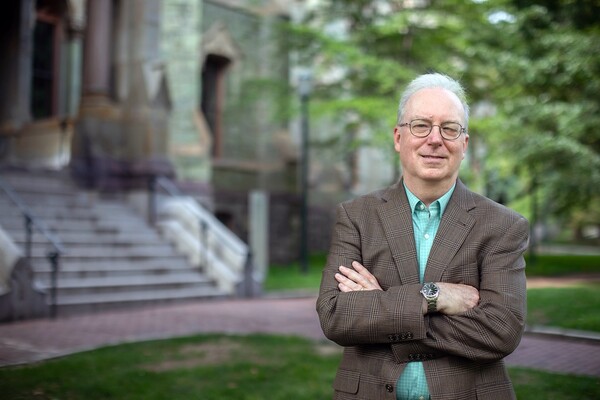
nocred

Last week, people in the Northeast, including many at Penn, experienced an unusual disruption to their day as the ground beneath and walls around started to shake for about half a minute. The magnitude 4.8 earthquake was, for some, a once in a lifetime occurrence. Centered in New Jersey, the quake did little damage.
To learn more about the mechanics of earthquakes and to discuss this rare event, Penn Today spoke with David Goldsby, professor and chair of Earth & Environmental Science in the School of Arts & Sciences, and Robert Carpick, the John Henry Towne Professor in the Department of Mechanical Engineering and Applied Mechanics in the School of Engineering and Applied Science.
Carpick: Simply put, an earthquake is a sudden and dynamic geologic event caused by the movement of pieces of the Earth’s crust pushing against each other.
Imagine standing on a sidewalk where there’s some dirt and small pebbles between your leading foot and said sidewalk. If you try push that foot forward, it won’t move at first, but with more and more force it’ll eventually slip and might slide quite suddenly.
Goldsby: Over time, as force accumulates, these pieces can no longer withstand the energy without moving, leading to a sudden slip; this is the essence of an earthquake. An earthquake occurs when there’s a sudden displacement along a fault, a crack in the Earth’s crust. Before the earthquake, this fault is ‘locked,’ accumulating stress over time until the force surpasses the fault’s frictional strength, leading to a rapid slip. This process not only causes the ground to shake but also releases accumulated elastic strain energy from the surrounding rocks, which is then partly transformed into seismic waves that propagate from the earthquake’s origin.
Carpick: Philadelphia is about 70 miles south of the Ramapo fault zone which runs through New York, New Jersey, and Pennsylvania. The closest parts of that fault system are between Doylestown and Easton, Pennsylvania.
Goldsby: Overall, there are certainly myriad faults below and near Philly, but there are no major fault lines that would produce major devastating earthquakes.
Carpick: David and I have been funded by the National Science Foundation to look at the underlying physics and mechanics of earthquakes, trying to get at the atomic-level processes that precede the sliding events. It will take a lot of work, but eventually we hope what we’re learning can, combined with the work of many others, lead to ways to actually predict earthquakes and how they will behave.

nocred

Image: fcafotodigital via Getty Images

Image: Mininyx Doodle via Getty Images

Charles Kane, Christopher H. Browne Distinguished Professor of Physics at Penn’s School of Arts & Sciences.
(Image: Brooke Sietinsons)